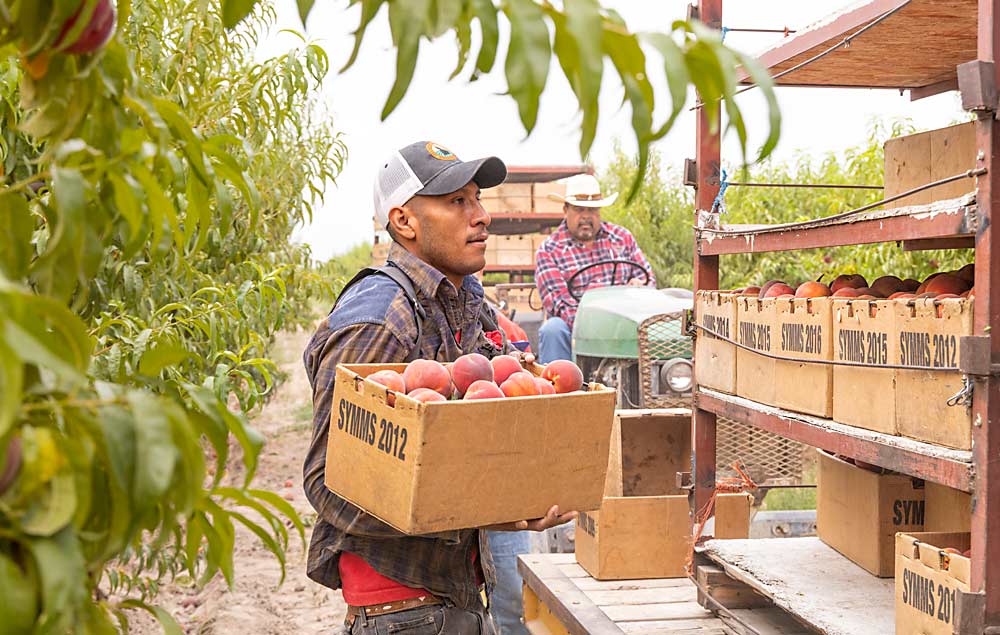
At Symms Fruit Ranch outside Boise, Idaho, grower Jamie Mertz teaches his crews to snap off tall branches on peach and plum trees to keep the system pedestrian, even as it sacrifices some production.
“Why do I want to grow a peach they can’t reach?” Mertz said. “We’re trying to help make picking more efficient.”
With the Adverse Effect Wage Rate in Idaho nearing $15 an hour, it makes no sense to grow fruit that costs more to pick, he said. It’s one of many decisions Mertz and his cousin, Dar Symms, the company president, are making to address labor challenges that threaten their family farm, now operated by the fourth and fifth generations. They’ve invested in new packing technology, created year-round positions and expanded their H-2A workforce. But they are still short-staffed in a region where farms and farmworkers are being pushed out by rising land prices and Boise’s suburban sprawl.
“This shed, we used to run with 150 people,” Dar Symms said, as workers packed peaches last August. “Now, we have trouble getting 70.”
Symms Fruit Ranch farms 3,000 acres of tree fruit and another 2,000 of hay and other row crops, which it can dry out to shift water to the orchard crops in drought years, as 2022 is shaping up to be, Symms said.
The packing operations run from July through April. In 2017, they built a new cherry line with automated sorting, a move that helped with quality — especially dealing with the heat-damaged fruit last year — but failed to reduce labor needs as much as expected, Symms said, because there are more specialized packs to make now.
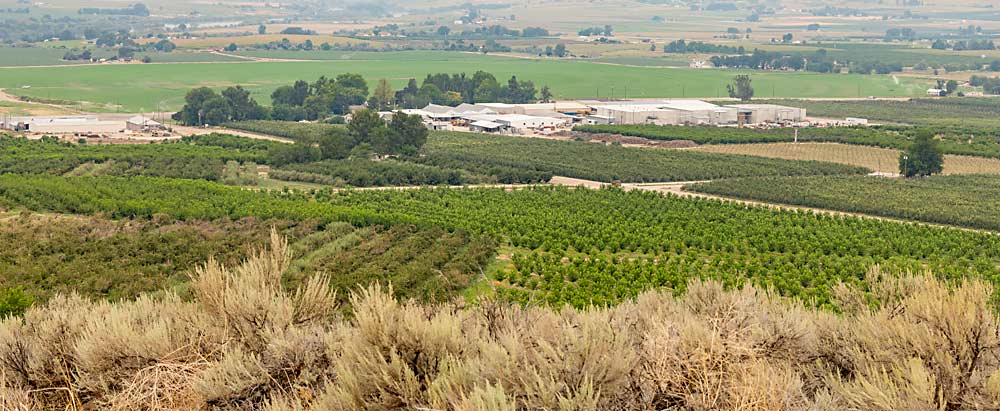
During the short period of downtime, they send workers out to the orchard to work tree planting and thinning. Offering year-round employment helps, but not enough.

“When I joined the farm back in the 1990s, the guys that were working for us full time picking and pruning are still the same folks doing it now,” Symms said. “People are not crossing the border to come to Idaho to look for farm jobs.”
Thanks to acquiring new housing, this year the company will contract its largest H-2A workforce, at 175, including an all-woman crew to staff the packing shed, Symms said. Since the farm only packs the fruit it grows, they can use H-2A workers in the shed.
“Back in the ’80s and ’90s, we were packing for other people,” Mertz said. “But the guy who has 40 or 50 acres of apples is just not there anymore. Now, you can’t buy a piece of farm ground and justify paying for it.”
Idaho is one of the fastest growing states in the country, including rapid growth in the Boise metropolitan area. “In Idaho, the most profitable crop we grow now is houses,” Symms said, adding that he’s speaking for the region, not his own farm.
That means a lot more people to buy locally grown fruit. The family is trying to use that local angle to their advantage, but Mertz said their scale of production requires national markets. “We have 750 acres of peaches. We can’t sell all of that in Idaho,” he said.
Their orchards are closer than Washington is to many major metro areas, lowering freight costs — a boost for cherries and apples — while their peaches harvest in September, a month after California. And there’s less competition from Washington in that window than there used to be.
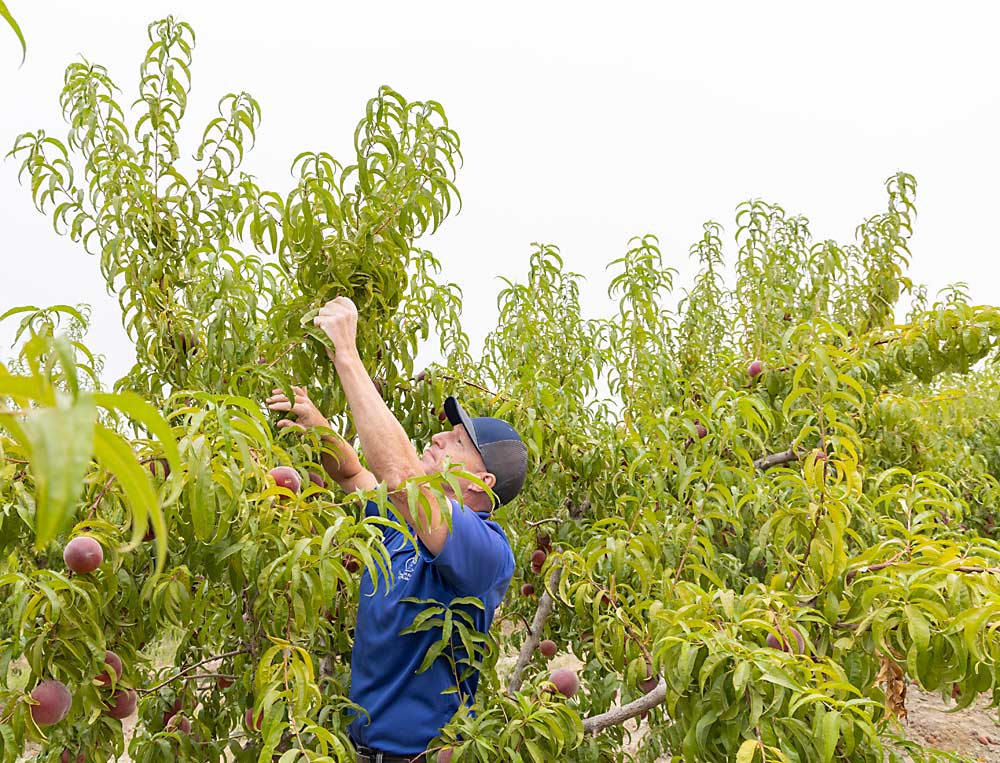
So, the Symms continue to lean into stone fruit and away from apples. With new cherry and peach varieties to stretch the season, and by strategically placing orchards in multiple locations with slightly different climates, to spread out the harvest and reduce the risk of frosts, the farm has reduced the risk of growing stone fruit, Mertz said.
“I used to be more worried about losing a crop,” he said.
As for apples, they grow mostly Fuji and Gala and still farm a lot of Reds and Goldens for the export market in Mexico.
“With the apples, it’s hard to figure out what to plant if you are not in Washington,” Mertz said.
Other growers in the region echoed uncertainties about their future in the apple market, with stagnant prices and rising costs of labor and other inputs.
Chad Henggeler, who runs Idaho’s other major fruit operation, has begun whacking the tops off his Honeycrisp blocks to create pedestrian systems — sacrificing the most high-cost fruit in the name of labor efficiency. He’s also planting more peaches, as well as zucchini, to take advantage of a gap in seasonal labor needs.
Doug Rowley, of Mountainland Apples, a co-op that operates one packing shed in Utah and one in Idaho, right next door to the Symms’ facility, said it’s increasingly hard to compete with Washington in the national retail market and nearly impossible to find enough employees to staff the seasonal shed jobs. The future viability of apples in the region may depend on demand and support from local markets, he said.
“We’d love every consumer in Utah to ask for Utah-grown fruit,” he said.
Good Fruit Grower picked a tough year to visit Intermountain West growers — the 2021 heat wave wrecked the sweet cherry crop, water shortages loomed and a haze of wildfire smoke hung over everything.
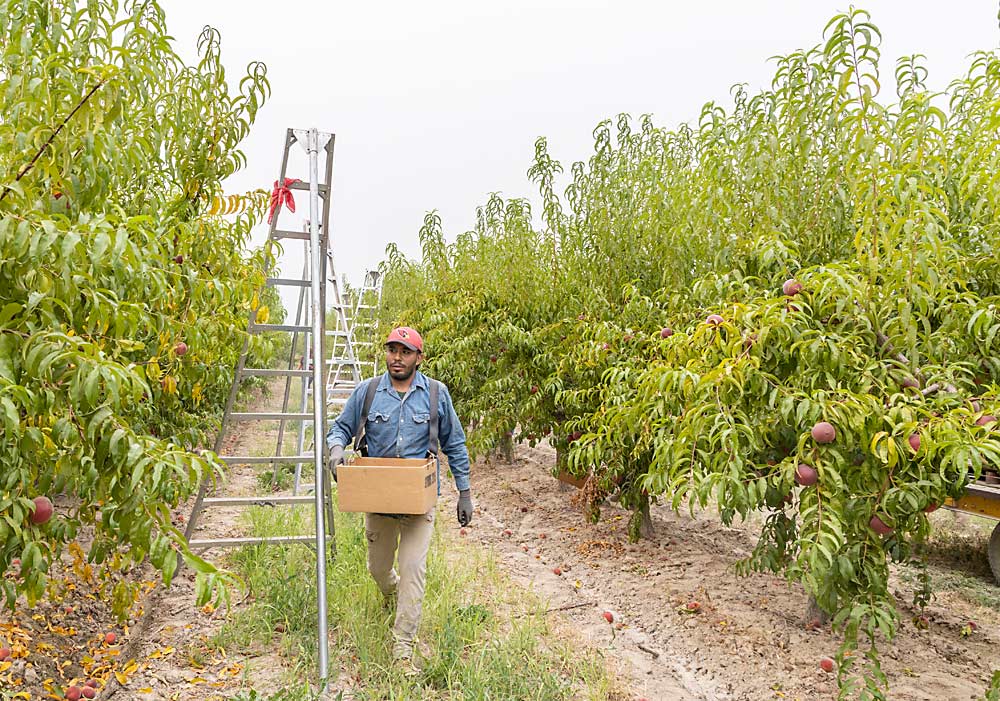
But workers flew through the Symms Ranch peach blocks, carrying ladders just in case but rarely climbing them. Workers pick directly into cardboard totes that unclip from picking harnesses and are loaded straight into a trailer they built to carry four layers of the totes. This helps workers move quickly and reduces the number of times they transfer the fragile, tree-ripened fruit, Mertz said.
As for the pedestrian approach, Mertz said they see it as a lower-cost alternative than turning to mechanization, and one that works with the trees they already have in the ground.
It also eases the work for the local workers, who are aging, he added. That trend also contributes to the farm’s increasing reliance on the H-2A program, which continues to push up their costs.
“The price of the H-2A program has been going up a tremendous amount,” Symms said. “Unless something happens with the prices we can get for the fruit, it’s going to be difficult to be sustainable long term.”
—by Kate Prengaman

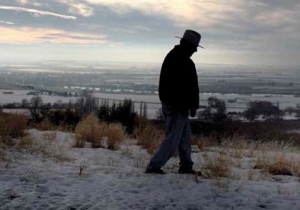
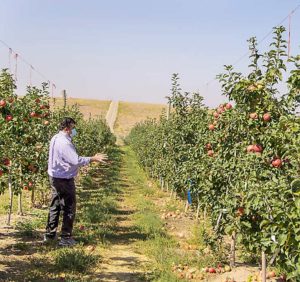





Leave A Comment